

Professional BoatBuilder Magazine
Cfd for powerboat design, part 2.
By Clay Ratcliffe , Jul 20, 2021
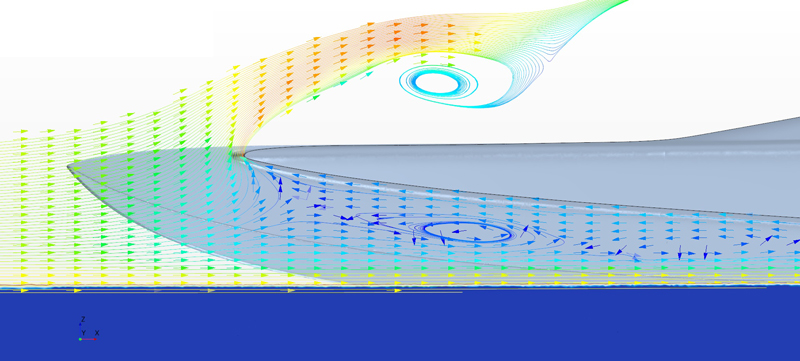
Computational fluid dynamics (CFD) modeling of the aerodynamics of a Doug Wright Designs 32′ (9.75m) high-speed catamaran revealed that while it ran at 100 mph, air compressed between the hulls, deck, and water was creating a backflow high in the tunnel and leaking out the front to mix with the airflow over the deck.
CFD analysis of hull aerodynamics holds the potential to answer many performance questions, including the cause of an infamous side-by-side blow-over of identical high-performance catamarans during competition in Key West in 2019.
In Part 1 of our series “ Accommodating Higher Power ” (Professional BoatBuilder No. 191) we explored a case study of hull refinement and the practical application of recent advances in computer modeling to the art and science of hydrodynamics. Looking back at the traditions of modern boat manufacturing, we delved into bottom design, old-school versus new-school tooling methods, and learned how builders can update trusted hulls with improved running surfaces.
Here in Part 2 we’ll look at aerodynamics—making improvements above the waterline. —Ed.
Eighty percent of the surface of a standard high-performance monohull or catamaran is out of the water, running through air. I remember as a kid putting my arm out the rear window of our car, twisting my hand right and left, and feeling lift and downforce for the first time. We all have experienced that exercise, and the aerodynamic laws we learned as kids hold true with any object surrounded by air. As boat designers and builders, how much attention do we give to that 80% of the hull surface, and how important is it?
Our Part 1 hydrodynamics case study vessel was a 32 ‘ (9.75m) Doug Wright Designs open-cockpit catamaran. We performed what CAD designers call reverse engineering. We started with an object in completed form, but we didn’t have modern triangulated point-to-point computerized coordinates to form a CAD file. Thus, with the aid of FARO Technologies (Lake Mary, Florida) we scanned the entire vessel to an accuracy of 0.004 “ (0.1mm). Then, with the help of Dimensional Engineering (Houston, Texas), we transformed the raw data into a full-mesh watertight stereolithography (STL) file suitable for the next step: computational fluid dynamics (CFD) modeling of the hull’s hydrodynamics and aerodynamics.

When these boats are flying, as they frequently do during competition, tunnel pressure is released but must be quickly and smoothly reestablished when the boat recontacts the water. The risks are that while airborne the boats will either catch too much air and flip over backward or bury the bow when they land right-side up.
See the Air
Before working in performance boats, I was in auto racing and a fan of Dale Earnhardt. He often said he could “see the air” as he entered the corner. I remember watching him come in from the first 100 miles (161 km) of a Super Speedway at Talladega slouched down in the seat, five-point harness loosened, his hands loosely grasping two rungs of the steering wheel. He asked for 1.5 lbs (1.5 psi/0.1 bar) in the right-side tires and half a turn on the left rear suspension. He was conducting seat-of-the-pants “tuning,” because he could see (and feel) the air and the dynamics it had on an object slicing through it at 200 mph (322 kmh) on the back straight. Granted, in a boat we are aware not only of primary forces coming from the right and the left like a race car on a twisty high-speed road course but also oncoming waves, quartering seas, winds from all directions, and shifting loads that can move the center of gravity. But with 80% of the boat’s surface area in the air, let’s look at how we can “see” the air and modify it to enhance boat performance, efficiency, and safety.
From a camera’s point of view at the water’s surface it is easy to see that when traveling at speed, a high-performance catamaran is barely in the water. The weight supported by the water is close to zero, meaning the boat is actually “flying” on a cushion of air.
Headwinds and turbulent wave structures launch the high-speed catamaran and make it airborne often more than 50% of its operational duty cycle. Once the vessel launches, all the hydrodynamic hull design we refined in Part 1 is of little consequence until the next impact with the water. With engines mounted at the aft extremity of the boat momentarily unsupported by water, the stern drops, the bow rises, and the boat becomes an airplane in stall mode without the benefit of wings, ailerons, flaps, or other controls. If it doesn’t flip over backward, it then crashes back into the water transom first, tripping, and then risking stuffing the bow torpedo fashion in the wave ahead of it.
Key West World Championships

This simultaneous side-by-side blow-over during competition got the attention of the crowd and led driver Scott Porta, who was racing just ahead of the accident, to pursue CFD analysis of the dynamics between the two boats running at speed.
During the last Race World Offshore World Championships in Key West (November 6, 2019), an unexpected and unfortunate incident occurred in the Super Stock class race. Boat owners Bill Allen (Allen Lawn Care Race Team) and Loren Peters (Loren Peters Racing) were running side by side in two equally designed Doug Wright 32 ‘ race-prepared catamarans when they simultaneously flipped 180°, bow over stern. The accidental “blow-over” appeared to be choreographed. Fortunately, no one was injured, but many on the race course that day wondered how two boats running side by side could instantly go from running on a horizontal plane to vertical and then back to horizontal in a split second.
For the drivers, the experience was unbelievably fast and nearly indecipherable as far as aerodynamic analysis goes. Bill Allen (owner/throttleman, Allen Lawn Care Racing) recalled it like this: “I was a little short on room, and I don’t know if they didn’t know I was there or what…. I think, you know, that we got together, and it blew over. So, at the time that we made initial contact, we were at 106 mph. But I can say this, I guess in a boat race when you bump, stuff goes crazy.”
Loren Peters (owner/throttleman, LPC Racing): “Billy Allen was coming up on the starboard side.… I scooted over a little and Billy did the same thing. All of a sudden, we’re right up next to each other. We were deck to deck. I see Billy going up, and right after that, I felt lift. My life flashed before my eyes. We went completely over in a split second.”
Scott Porta (owner/throttleman, Porta Performance ) was throttling the catamaran just ahead. He describes the incident: “We were probably running 113 mph. The two boats just behind us were side by side trying to conduct a straightaway pass and positioning for the turn. These two [boats] naturally gathered up next to each other. The compressed tunnel air that normally escapes from under the sides of the boats was stopped when these guys got next to each other. The increased tunnel pressure easily pushed the bows up. Then the wind-drag and momentum took over. Think of it like when you try to slam a refrigerator door as hard as you can and the gasket traps the escaping air and prevents a hard closing of the door. The idea of boats gathering up next to each other and having a blow-over actually isn’t new and is common in single-engine tunnel boat racing. However, this may be a first for an offshore race.”
Porta’s ongoing efforts to refine the running surfaces of these Wright-designed catamarans for competition and recreational use were informed by this dramatic episode as well as by his own accumulated time behind the wheel on that model.
Porta: “Catamarans run on a cushion of air. There are physics issues we felt the need to address. With race and recreational cats running well over 100 mph, our mission has been to improve design: first, to create the largest possible margins for safety in turns and rough water; second, to design for softer landings to reduce driver fatigue and equipment failure; third, to reduce running surface drag for improved performance at lower trim angles. The resulting reduction in frontal area increases speed and stability while creating a larger window of safety. Aerodynamics is the next frontier to explore for the biggest possible untapped gains.”
To simulate the blow-over, we had two options: the conventional wind tunnel and model construction, or computational fluid dynamics (CFD). As in Part 1, CFD was the easy choice for obtaining results quickly and the ability to model subsequent design remedies. Again, we chose TotalSim US (Dublin, Ohio) as our technology partner.
Let’s review the particulars of the case study boat and the theoretical running conditions:
- Doug Wright 32 ‘ wide-tunnel catamaran
- 5,000 lbs (2,268 kg) fully fueled, ready for passengers
- Twin Mercury 300XS engines (300 hp, approximately 600 lbs/272 kg each)
- Flat water
- Wind speed 0 mph
- Design speed 100+ mph (161+ kmh)
As speeds approach 100 mph, two primary dynamics contribute to lift and resultant speed on this model:
Engine lift—With a bullet-shaped gearcase and the X-dimension raised to a high level, a hydrodynamic phenomenon occurs. The half-submerged gearcase alone generates enough lift to carry the entire weight of the 600-lb outboard.
Hull lift—The shape of the catamaran tunnel captures and traps air between the sponsons, thus providing lift that supports most of the weight of the boat.
The CFD Assessment and Conclusion
Nathan Eagles, principal at TotalSim, and Scott Porta set out to see how the air currents at 100+ mph influence handling, speed, and efficiency of the catamaran. When Eagles saw the footage and spoke with Porta about the tandem liftoff at Key West, his immediate thought was to apply the tools and experience from other motorsports work to help explain why this happened and potentially develop some countermeasures that could reduce the risk of it reoccurring.
At the beginning of the project, Eagles offered a corollary: “Assessing safety and developing countermeasures to reduce the risks posed by aerodynamic forces when vehicles get outside their normal operating envelope is something the motorsports community has worked hard to address for many years. My initial foray was as head of CFD at the Williams F1 Formula One team, where I worked with the F.I.A. [Fédération Internationale de l’Automobile, the sport’s governing body—Ed.] to understand the forces acting on an F1 car as [it] pitched nose up, and at which angle the aero forces overpowered the weight and inertia forces.”
Later, during the development of the aero kits, TotalSim responded to one of the requirements imposed by Indycar. When the nose pitches up, the new bodywork was to be more stable than its predecessor while traveling sideways and/or backward. This meant that as the shape and the form of the car developed for efficient downforce and drag production around the track, TotalSim had to make sure the forces and moments acted to ground the car if it got airborne (its aero kit won the 100th running of the Indy 500 with no serious accidents).
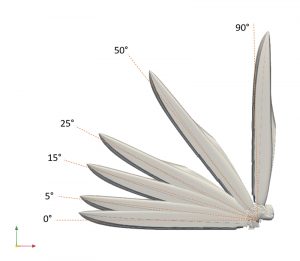
Angles Assessed in Blow-Over Model
The first step in analyzing the Key West event was to understand the typical forces and moments acting on the Doug Wright 32 when running where Porta was out in front and on his own. To do this, Eagles took the same geometry file Dimensional Engineering had created from the FARO scan and built a CFD model that focused only on the surface in contact with the air.
Eagles: “We set the angle of the hull relative to a flat sea state at several positions (Figure 1) and then assessed the forces and moments at each of those positions (Figure 2). The key forces under consideration are the drag (force acting against the forward motion) and lift (vertical force pushing up away from the water). The result of the combination of the lift and drag forces was a pitching moment (nose-up) about the center of gravity created by these forces.”
We can see from Figure 2 that as the angle of the isolated boat increases from 0° to 50°, the drag and lift forces (and resultant) increase as well, as does the pitching moment. We also see that the resultant is nonlinear, meaning that as the angle changes, the curves get steeper, indicating that doubling or tripling the angle more than doubles or triples the forces and moments. This characteristic implies gross instability, because once the aerodynamic forces exceed the weight of the boat and the bow starts to lift, the forces continue to increase at a rate that makes correction exceedingly difficult.

Attack Angle Influence on Lift, Drag, and Pitching Moment of Single Boat
Having established the characteristics of the isolated boat, the next step was to place the boats side by side to see if anything changed. From the footage and the comments from the pilots, Eagles positioned the virtual boats 3 ‘ (0.91m) apart, set the angle of attack (AOA) at 5°, and ran the simulation. Figure 3 shows the same isolated boat forces and moments with the two-boat simulation data superimposed on top. The results are quite dramatic.
We see both drag and lift increasing compared to the isolated boat, with the drag on each of the side-by-side boats being equivalent to the drag on an isolated boat at around a 7° AOA (suggesting they may be slowing each other down), while the lift of the side-by-side boats is equivalent to an isolated boat at around 16°.The huge changes in lift and associated pitching moment change are greater than the restoring moment of the weight, so the boats are no longer trimmed out, and the bows begin to rise.

Dynamics of a Single Boat vs Boats Running Side by Side
As we saw in Figure 2, as the angle increases, so do the forces; and as the bows come up, the forces go up, the bows rise some more, and this continues until the boat flips over. The CFD force data illustrate a dynamic that would lead to the event we saw in Key West. But why did it happen?
This is where CFD really starts to show its strengths. The forces we have looked at are a result of pressure changes on the surface of the hull. These changes are created by local accelerations and decelerations of the air as it washes over the hull and deck, and CFD can show us how and why these occur. In Figures 4a and 4b the underside of the hull colored by the component of pressure is creating lift for the two different configurations. Yellow depicts low amounts of lift; red is high lift; green is low levels of downforce (the aerodynamic force pulling the boat toward the water); and blue is high downforce.
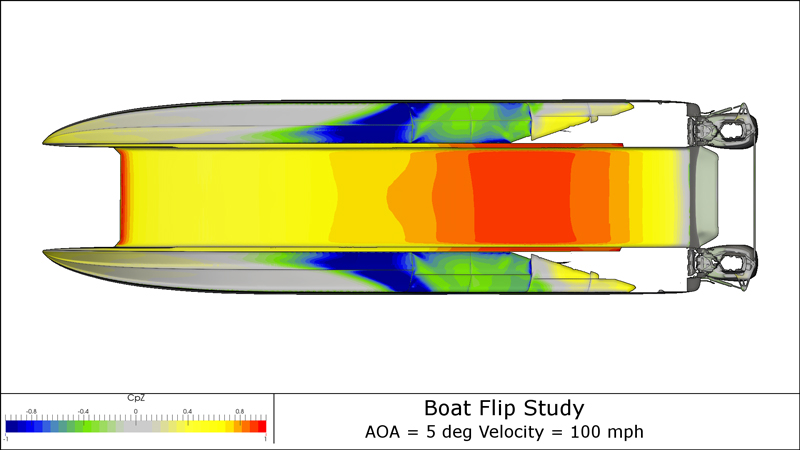
CFD of Lift and Downward Force on Single Boat
The plots show that the entire tunnel surface is creating lift whether the boat is alone or side by side, and there is not much change between the two scenarios. However, the sponsons tell a different story. The isolated boat is showing strong downforce coming from both sponsons at the section just ahead of where the hull meets the water (blue patch midway down the sponson). This downforce is generated by the air accelerating in the narrowing gap between the hull and the water surface. This is illustrated in Figure 5a as velocity vectors colored by speed, with blue showing low speed and red showing high speed.
Eagles: “As air enters the tunnel, it starts to slow down as it packs up under the boat, and as it progresses it gets squeezed into a tighter volume and starts to push out at the sides, accelerating (red arrows) as it washes outboard over the hull surface. As the air accelerates, its pressure drops, creating suction, and this in turn generates a force pulling the hull towards the water. There are some effects also happening on the deck side, but these are secondary compared to the hull and have not been covered here.”

CFD of Lift and Downward Force on Boats Running Side by Side
Looking at the side-by-side configuration in Figure 4b, we see an effect on the outer sponson similar to what is seen on the isolated boat. However, on the inside sponson we see most of that downforce has been eliminated and replaced by lift across the majority of the surface. This is the source of the liftoff mechanism that caused the blow-over. The velocity vectors of the side-by-side configuration show that air is unable to get out as effectively, as it’s blocked by the sponson of the adjacent boat, as illustrated by the slow-moving blue arrows in Figure 5b. This slow-moving air has higher pressure and therefore does not create the suction we saw in the isolated boat, with the net result that the inside sponsons on both boats now create significantly more lift, disrupting their stable trim and causing the bows of the nearly identical hulls traveling at the same speed to flip quickly and almost simultaneously.
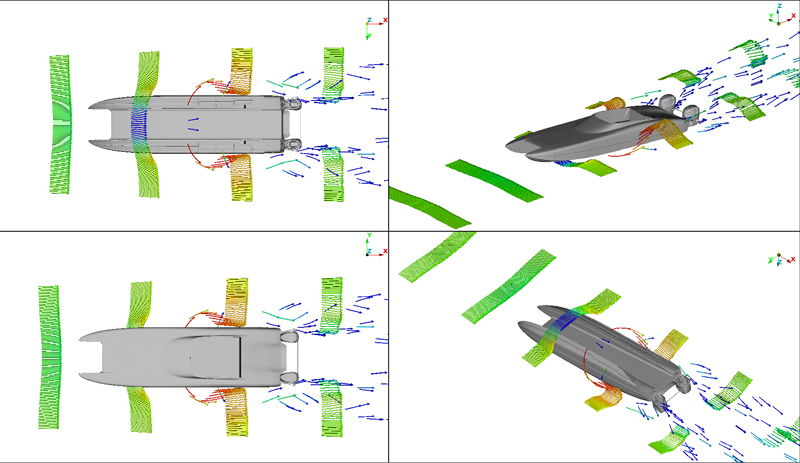
CFD of Air Velocity on Single Boat
“The simplest way to reduce the risk of this happening in the future is to make sure there is sufficient gap between boats that the air can get out,” Eagles said. “However, racing being racing, when you are fighting for the patch of water leading around the buoy, I suspect that this probably will not be what is at the forefront of your thinking.”
He concluded: “A more practical solution would be to adopt something like Indycar or NASCAR and add a device to the boat that when deployed creates a counteracting force that cancels out the lift and stabilizes the pitching moment. This could be a passive device [auto-deploying] or active [driver initiated] and will require discussion with the governing bodies to make sure it does not adversely impact the racing or create issues of its own. I sense there might be a new project on the horizon.”
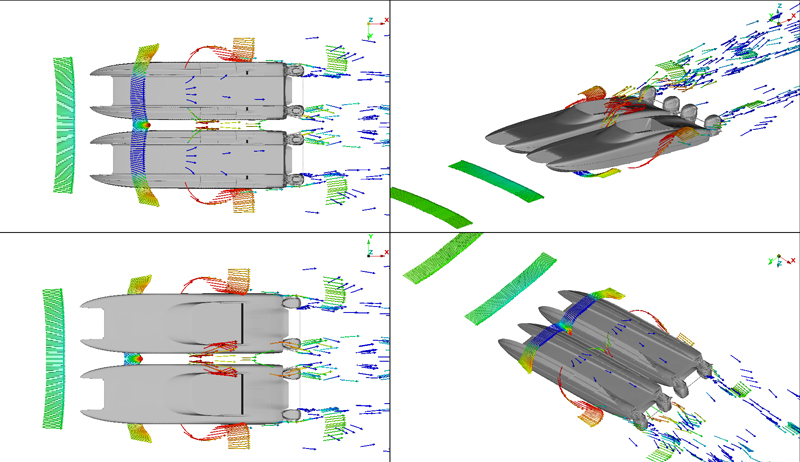
CFD of Air Velocity on Boats Running Side by Side
Real-World Aerodynamics
Most relevant to designers and builders of recreational powerboats, our case studies show that aerodynamic design really starts affecting a boat above 60 mph (97 kmh). With multiple higher horsepower outboards being bolted on the transom, almost every boat manufacturer has a model capable of that speed, but aerodynamics are relevant on more sedate vessels as well. Builders use phrases like dry ride, acoustically tuned cockpit, comfortable, and wind free to describe the virtues of even a 20-knot boat. That’s no surprise when social media is full of posts about how “car-like” their recent boating experience had been. The current automotive comfort expectations have raised the bar for everyone. Gone are the days of the passengers in a top-down convertible being exhilarated by the wind in their hair on a gusty open highway. Modern convertibles are acoustically and aerodynamically refined. The open sky is still overhead, but engineering has all but eliminated the noise and wind of the convertible.
Let’s say that a boat owner drives to the marina in a quiet and aerodynamically refined convertible before boarding a newly acquired sport boat, a product that may cost twice or three times as much as the car. Shouldn’t expectations for comfort and noise be the same on the boat as in the car?
Jake Fraleigh, president of Eliminator Boats (Mira Loma, California), on the importance of aerodynamics to his recreational models: “In the past we used a higher deck, and we noticed that people in the back of our cockpits were getting lots of wind buffeting. Our newest models have flattened decks. We pulled the ‘bubble’ out of our top deck, and that allowed our new windshield design to positively affect our aerodynamics for cockpit comfort.”
Because Eliminator is installing more outboards, which means the boats go faster, Fraleigh said, “on both our 31 and 33, we are widening our tunnels now and changing the slope of the deck and tunnel entry, therefore creating more tunnel pressure. We have even added 45° angles to the sponson area upper-deck plane entering the tunnel for better entrapment of air under the boat. We have focused on more lift and therefore a faster, more agile boat.”
Nigel Hook, owner of SilverHook Powerboats (Sanford, Florida), confirmed the importance of CFD modeling during design and model refinement. “The SilverHook was designed as perfectly aerodynamic [with the help of CFD] by Ocke Mannerfeldt of the Swedish firm Mannerfelt Design Team. It has wings, although not movable; it has automatic stabilization. The consumer design has the same CFD advantage. It is fast, efficient, and safe. Only through aerodynamics are we able to manifest the true race-proven features.”
For now, the new minimum expectation for North American powerboat buyers is twin outboards, and the new normal is triples or quads on higher end vessels. More power adds speed, and with speed, airflow becomes very important to boat designers and builders. Boats can and do fly, if only for brief intervals, but managing their seakeeping, safety, handling, and comfort at those speeds requires as much attention to aerodynamic design and analysis as to hydrodynamics. To that end, more manufacturers are using CFD modeling to create and simulate the performance of any given design, especially as they pile on more power to meet market expectations. The results can range from understanding and correcting sources of dangerous instabilities and performance flaws, to quieting the ride in the cockpit and keeping the hair out of your eyes.
Read more Companies , Design , Racing articles
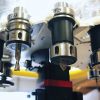
- CNC Construction on the Rise
How computer-aided design and software-controlled manufacturing technologies have reshaped custom and semi-production boatbuilding.

Hull Vane: A Wing With Benefits
Typically, military ships are designed and built for specific missions, not to curb their carbon footprint. However, if the Dutch navy serves as an example, that is about to change…. Read more »

Princeton University Electric Speedboat Team Sets World Record
Even a broken prop shaft could not slow them down. On October 26, 2023, the 40-plus members of Princeton University’s Electric Speedboat Team (PES) erupted in cheers on a clear,… Read more »

Recent Posts
- Learn Electrical Systems from Nigel Calder
- PRO-SET Epoxy Named an Official Supplier for New York Yacht Club American Magic, Challenger for the 37th America’s Cup
- Marine Trade Education News
- Sea Hawk Paints’ Colorkote is ‘reinventing the art of antifouling’
- Companies (82)
- Construction (105)
- Design (156)
- Drawing Board (8)
- Education (24)
- Environment (15)
- Events (20)
- Materials (48)
- Obituary (17)
- People/Profiles (46)
- Products (16)
- Propulsion Systems (30)
- Racing (15)
- Repair (37)
- Rovings (313)
- Short Cuts (3)
- Sponsored Partner News (13)
- Systems (80)
- Task Sheet (1)
- Uncategorized (26)
- Wood to Glass (7)
Powerboat Hulls Explained
Horsepower Vs Speed
Displacement is an A VERAGE E STIMATED D ISPLACEMENT of a amateur built vessel.
There are no products to list in this category.
- Paddle Board

A Guide to Power Catamaran Boats
If you’re into offshore fishing or water sports, the Power Catamaran or “multi-hull powerboat” offers you a great option for your first vessel. These powerboats provide you an excellent combination of performance, stability, and maneuverability.
These boats have a catamaran design, relying on two hulls to float the vessel instead of the typical deep-V hull found on other powerboat models. The multi-hull powerboat is ideal for cruising, and you can set it up for fishing or watersports as well.
With the multi-hull powerboat, you get options for multiple fishing stations over each hull without disrupting the boat’s balance on the water. They are ideal for use in lakes and estuaries, and they excel on the open ocean.
These boats come in lengths ranging from 16 to 30-feet, with plenty of customizable options and accessories. Typically, you get a stern-drive or outboard motor configuration, with center consoles for the driver and loads of storage space onboard.
These boats can carry from six to eight passengers easily, and most models will fit on trailers. This post gives you all the information you need on selecting the right multi-hull powerboat to suit your aquatic needs.
What Is a Multi-Hull Powerboat?
The multi-hull powerboat features a catamaran design, with two hulls running down the boat’s length, featuring a gap between the two. This configuration makes the boat exceptionally stable at higher speeds, allowing fast movement through choppy water inshore or offshore.
The catamaran might seem like a niche boat design. However, it offers you several advantages on the water, such as a smooth ride, stability, and economy. These boats come in a wide range of designs and lengths, with the smallest versions measuring around 12-feet, and the largest extending up to 70-feet or longer.
The longer vessels come with liveaboard facilities and all the amenities you need to spend days out on the water. We like to think of the multi-hull powerboat as the catamaran design of the cabin cruiser or cuddy cabin boat. You get all the same advantages as these models but with an added performance on the water.

You get plenty of options for live wells, rod holders, gear storage, and integrated coolers for drinks and fish. Whether you’re planning a weekend trip or just going out for the day, the multi-hull powerboat is a great choice for your ocean-going excursion.
While the catamaran model is the most popular choice in this category, there are models featuring a tri-hull design. Typically, these vessels cater more towards fishing than performance or watersports, offering slightly less steering maneuverability than the dual hull setup. However, the addition of the third hull brings superior stability to the boat, making them ideal for fishing in choppy water or cruising from island to island on rougher seas.
The ripple hull models typically feature more liveaboard space, with some models having multiple separate living areas beneath the deck.
Benefits of Multi-Hull Powerboats
The Multi-hull powerboat offers you plenty of advantages for fishing, cruising, and watersports. Here are our top reasons for adding this boat to your shortlist of considerations.
Speed and Handling
The multi-hull boat relies on two separate hulls contacting the water. As a result, there is less drag from the hull when cutting through the water. You get faster speeds than you do with a mono-hull design and excellent handling with tight turning circles. These boats do well on open water, allowing for superior stability in rough waters when fishing offshore.
Dynamic Cruising
The multi-hull powerboat features dynamic cruising capability. These boats are most popular with recreational users that want to cruise down the coastline on the weekend or take a few days out on the water for a fishing trip. The built-in accommodations in many designs make it suitable for staying out on the water overnight.
Stability and Performance
Multi-hull powerboats can come with several engine configurations. The motors on these boats offer excellent performance, propelling the watercraft up to speeds of 50 to 80-mph, depending on the model. They also make suitable watersports boats, allowing for skiing and wakeboarding.
Plenty of Storage
The multi-hull boat offers you more storage capability than mono-hull models. You get loads of storage room above and below deck for your dive gear or fishing equipment. There is under-seat storage, and the v-berths in the bow of these models can include plenty of amenities.

Center Console Design
The center console driver configuration is common with the multi-hull performance boat. This driver position gives you more control over the vessel when turning. Some consoles may position closer to the bow or aft of the boat, depending on the length and design features of the boat.
Hardtop Designs
Most multi-hull powerboats come equipped for long ocean-going trips. As a result, they may have a covered driver cockpit leading to below deck accommodations or storage facilities. Some models have wraparound cockpits with doors sealing the cabin, allowing for air conditioning inside the boat on hot days. Other models come with an open plan design and a hard roof.
Trailerable
Most models of multi-hull power bats range from 16 to 24-feet, but there are plenty of longer models. The shorter lengths are easy to trailer, allowing for easy removal for the water and transportation. However, some models may be wider than 10-feet, requiring a special license to operate the loaded trailer. Check with your local authorities for trailer regulations and laws.
Fishing and Watersports Capability
These boats are excellent fishing vessels, offering you plenty of stability for casting on any side of the boat. The center console design means you have walkways on either side of the console, allowing the angler to chase the fish around the boat if it decides to drag the line. Most models also feature setups for watersports like wakeboarding, with T-tower bars or Bimini tops for higher tow points.
Outboard or Stern Motors
The multi-hull powerboat comes with a design for performance out on the water. As a result, these boats usually feature outboard motors with capacities ranging from 150-HP to 450-HP. Some models may use dual-motor setups or stern-mounted motors that hide out of sight.
Multiple Sizing Options
As mentioned, the multi-hull boat comes in a variety of lengths to suit your requirements. Whether you need a large boat for spending days out on the water or a simple day fishing vessel, there’s a multi-hull design to suit your requirements.
Disadvantages of Multi-Hull Powerboats
While the multi-hull powerboat is a flexible design suited for cruising, fishing, or water sports, it does come with a few drawbacks.
Large Engines and More Fuel
These boats feature design and construction for speed, with large outboard motors. As a result, they are somewhat heavy on fuel, especially with a large-capacity dual-motor setup.
Top Multi-Hull Powerboat Models
You have plenty of choices when selecting your multi-hull powerboat. Here are some of our top picks for the best models available.
Calcutta 480
This multi-hull powerboat has a 51-foot length, and it’s ideal for offshore use, providing exceptional stability thanks to the size and the 17-foot beam. It’s one of the largest models available, featuring world-class multi-hull design.
You get a spacious deck with a center console configuration and enough room to walk down either side of the boat when fishing. The dual hull provides exceptional stability combined with the long length, and you get options for diesel-powered or gasoline engines in outboard or in-stern setup to suit your requirements.

The Calcutta brand custom-builds boats for its clients. You get options for fully enclosed bow areas and fishing-style cabins with a roomy helm deck and a sleeping berth included in the bow. You also have an enclosed head for ablutions, but there is no option for a shower.
This model comes with an enclosed cockpit and air conditioning to keep you cool when cruising. The motors on this boat are monsters, featuring a twin setup of 550-HP Cummins diesel inboards available on the sports version for superior power and speed on the water while maintaining the boat’s maneuverability.
There’s a 600-gallon fuel capacity for the thirsty engines, allowing you to spend days out on the water without running out of fuel.
Insetta 35 IFC Hydrofoil
The Insetta 35 IFC hydrofoil offers you the smooth-sailing benefit of hydrofoils, with premium multi-hull designs. The hydrofoil system generates the lift under the hull, allowing for superior, stable sailing in rough water conditions.
The hydrofoil reduces friction and dragging on the hulls, reducing your fuel consumption by as much as 40% compared to other models with a similar dual hull design. The foil fits between the sponsons, featuring design and construction with stainless steel.
Another interesting design feature with this model is the way the inboard motors have positioning towards each other. This configuration allows for maximum thrust for the propellors on the asymmetrical multi-hull.

The foil and motor setup design also allow for much tighter turns than you get with other multi-hull models, giving you similar performance to what you expect in a mono-hull design.
The boat comes with a large coffin box with 156-gallons of space available and an insulated finish. You get eight rod-holders positioned in the bow and aft of the boat. You also get dual 30-gallon transom live wells and an option for a third below the mezzanine seat.
The Insetta 35 IFC hydrofoil comes with a three-pump sea chest, a folding bait station, and plenty of tackle storage. The boat gets its power and performance from dual Mercury 400 Verados, with the vessel topping out at speeds of 58-mph on open, calm waters.
Invincible 46 Cat
This model is the largest in the Invincible range, and it’s a great choice for offshore fishing. This flagship model comes with a 42-foot length and a center console design for easy driver operation. This multi-hull powerboat relies on a hybrid semi-asymmetrical multi-hull giving it great turning capability and maneuverability out on the open water.

The Invincible 46 Cat features a stepped hull with fast acceleration and plenty of lift. You get a quad engine setup with Mercury 450 Racing outboard motors, and the craft can reach a top-end speed of 78-mph. Other notable features of this boat include a vacuum-infused hull and grid-stringer system for an “invincible” boat that’s virtually unsinkable.

Bali Catspace
If you’re looking for a luxury powercat model, the Bali Catspace Motoryacht is a fantastic – but expensive choice. This model features a design from legendary boat maker Olivier Poncin. This model is a natural cruiser and ideal for the longest ocean-going trips.
The dual hull and high ride height from the water provide exceptional stability for the boat, even in the roughest offshore and coastal waters. The boat comes with a lounge on the deck, and there’s plenty of room around the center console cabin to walk the length of the boat on either side of the vessel. The top level of the boat features the captain’s station and wheelhouse, with luxury living quarters underneath.

You get a huge lounge and a v-berth with sleeping quarters for spending the night out on the water. The cockpit presents the captain with a 360-degree view of the water, and the high riding position gives you a view of the ocean that extends for miles.
The boat comes with all the amenities you need, including tables, a full kitchenette, and luxury sleeping accommodations. There are plenty of entertainment options for TVs and stereo systems down below, with an optional hardtop Bimini.
The Bali Catspace Motoryacht receives its power from a single or dual engine setup featuring 150-HP or 250-HP Yamaha motors.
Wrapping Up
With so much variety available in multi-hull powerboats, you have options for any activity out on the water. These boats are more common in coastal waters, and they make excellent fishing vessels.
Decide on the model that suits your activity, as most have a purpose-built design for fishing, watersports, or cruising. There are plenty of customization options, so make sure you keep a budget in mind as the additions can cost more than 20% of the boat’s initial sticker price, increasing your costs.

John is an experienced journalist and veteran boater. He heads up the content team at BoatingBeast and aims to share his many years experience of the marine world with our readers.
A Complete Guide to Micro Skiffs: All You Need to Know!
A complete guide to narrow boats: all you need to know, a guide to aluminum fishing boats.
Comments are closed.
Type above and press Enter to search. Press Esc to cancel.
Best Coast Water Sports
BCWS is your go-to source for all things related to water sports
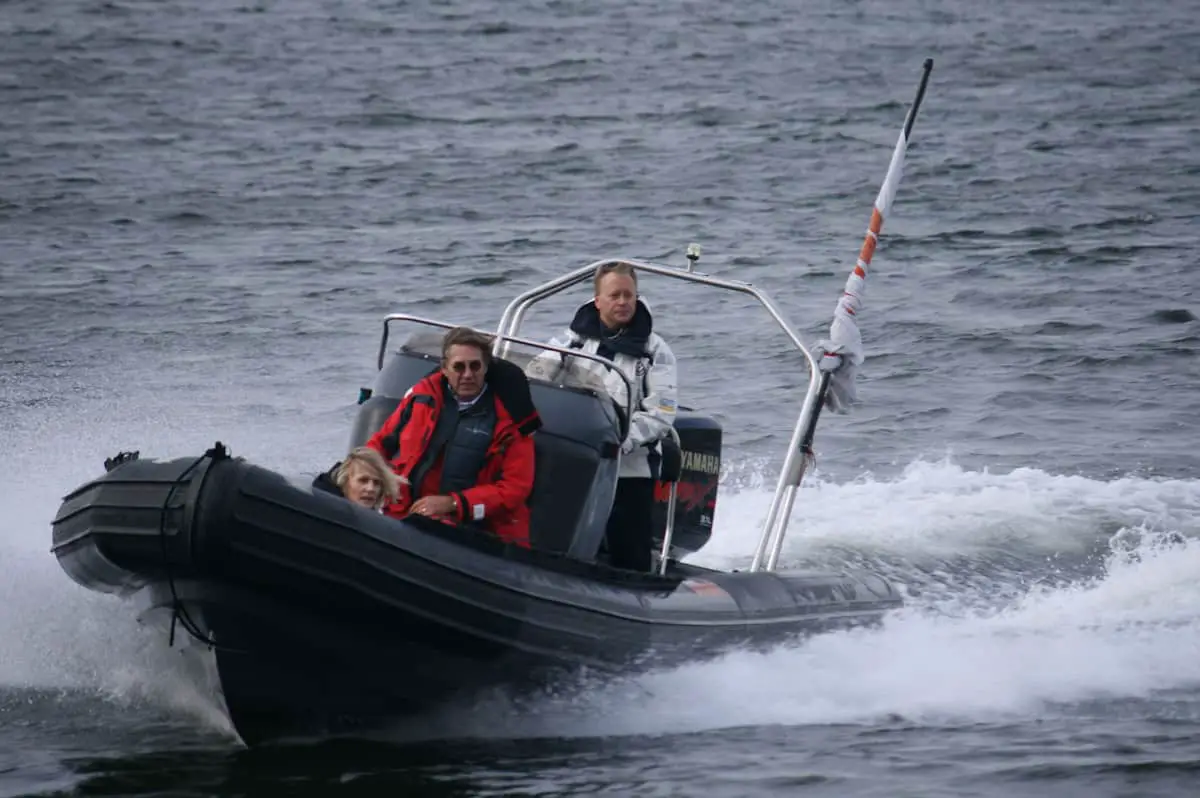
What Is a Powerboat? Understanding the Basics of This Popular Watercraft
Powerboats are a popular and dynamic watercraft that is used for various water-based activities such as fishing, racing, and leisure boating. If you’re new to the world of powerboats, it’s essential to understand what they are and how they work. This article will delve into the history of powerboats, the different types available, and the various engines and propulsion systems that power them.
The History of Powerboats
Early powerboats were crude and unrefined, but they paved the way for what we know today as motorboats. The first powerboat was created in the late 1800s, and it was powered by steam engines. The boat had a single cylinder and was designed by Gottlieb Daimler, a German engineer. It had a maximum speed of 6mph and was used primarily for leisurely cruises.
However, the invention of the powerboat was a game-changer for transportation and leisure activities on the water. People could now travel faster and further, and the use of powerboats became more widespread.
Early Powerboat Innovations
As the years progressed, engineers and boat builders made significant advancements in powerboat technology. In the early 1900s, gasoline-powered engines began to replace steam engines. This greatly increased the boat’s speed and endurance. The first gasoline-powered boat was built by Frederick William Lanchester in 1895. The boat was called the “Lanchester Motor Boat,” and it had a 5hp engine that could reach a speed of 7mph.
With the introduction of gasoline-powered engines, powerboat racing became more popular. In 1911, the first hydroplane race was held, and it marked the beginning of a new era in powerboat racing. Hydroplanes were designed to skim over the water at high speeds, and they quickly became popular for racing and record-breaking attempts.
The Evolution of Powerboat Design
Powerboat design continued to evolve throughout the 20th century. New materials, such as aluminum and fiberglass, were used to make boats lighter, faster, and more fuel-efficient. Innovations in hull design, such as deep vee hulls and stepped hulls, greatly improved the boats’ handling and stability.
During World War II, powerboats played a crucial role in the military. They were used for transportation, reconnaissance, and even as attack vessels. After the war, many of the technological advancements made for military boats were adapted for civilian use.
Modern boats can achieve very high speeds while still maintaining excellent maneuverability. They are designed to be more fuel-efficient and eco-friendly than their predecessors. Hybrid and electric powerboats are becoming more popular, and many manufacturers are focusing on sustainable design and production practices.
Modern Powerboat Advancements
Today, powerboats are more advanced than ever before. Technological advancements, such as digital displays and computerized engine management systems, have greatly improved the boats’ safety and reliability. Many modern boats are equipped with luxury features such as air conditioning, entertainment systems, and on-board kitchens.
Powerboats are used for a variety of activities, including fishing, watersports, and cruising. They are also used for commercial purposes, such as transportation and offshore drilling. Powerboats have come a long way since their humble beginnings, and they continue to be an important part of modern water transportation and leisure activities.
Types of Powerboats:
There are many different types of powerboats available, each with its unique design, purpose, and features.
Bowriders are versatile boats that are designed for families and leisure boating. They typically have an open layout with seating in the bow and in the cockpit. Bowriders are great for water sports, such as wakeboarding and skiing, and are often used for day trips on the water.
Center Consoles
Center consoles are popular boats for fishing and offshore use. They have a single console in the center of the boat, which allows for more deck space and better visibility for the captain. Center consoles often have built-in livewells, fish boxes, and other features essential for fishing.
Cabin Cruisers
Cabin cruisers are larger boats that are designed for overnight trips and longer excursions. They have a fully enclosed cabin with sleeping quarters, a galley, and a bathroom. Cabin cruisers are perfect for families or couples who want to spend extended periods on the water.
Personal Watercraft (PWC)
Personal watercraft, also known as jet skis, are small and agile watercraft that are ideal for recreational use. They are often used for racing, freestyle riding, and touring. PWCs are popular with both novice and experienced riders and offer a fast and thrilling experience on the water.
High-Performance Boats
High-performance boats are designed for speed and precision. They often feature powerful engines, lightweight materials, and high-tech propulsion systems. High-performance boats are commonly used in offshore racing and poker runs.
Powerboat Engines and Propulsion Systems:
The engine and propulsion system are the heart of any powerboat. There are several types of engines and propulsion systems available, each with its unique advantages and disadvantages.
Inboard Engines
Inboard engines are located inside the boat’s hull and are connected to a propeller. They are powerful and efficient, and their design allows for better weight distribution and handling.
Outboard Engines
Outboard engines are located outside the boat’s hull and are attached to the transom. They are less expensive and easier to maintain than inboard engines, and their design allows for more deck space.
Stern Drives
Stern drives are a combination of inboard and outboard engines. They are located inside the boat’s hull, but the engine and the drive are outside the transom. The propulsion system allows for better handling and speed control.
Jet drives use a jet of water to propel the boat forward. They are powerful and efficient, and their design is ideal for shallow water applications. Jet drives are commonly used on PWCs and other recreational watercraft.
Electric Motors
Electric motors are becoming increasingly popular in the powerboat industry. They are quiet, efficient, and environmentally friendly. Electric motors are ideal for small boats and dinghies, but their range is limited compared to traditional engines.
In conclusion, powerboats are a diverse and exciting watercraft that can provide fun and enjoyment for people of all ages. Whether you’re interested in fishing, leisure boating, or racing, there is a powerboat that is perfect for your needs. Understanding the different types of boats and propulsion systems available will allow you to make an informed decision when selecting a powerboat for your next adventure on the water.

- 2024 BOAT BUYERS GUIDE
- Email Newsletters
- Boat of the Year
- 2024 Freshwater Boat and Gear Buyers Guide
- 2024 Boat Buyers Guide
- 2024 Water Sports Boat Buyers Guide
- 2023 Pontoon Boat Buyers Guide
- Cruising Boats
- Pontoon Boats
- Fishing Boats
- Personal Watercraft
- Water Sports
- Boat Walkthroughs
- What To Look For
- Best Marine Electronics & Technology
- Watersports Favorites Spring 2022
- Boating Lab
- Boating Safety

Six Amazing Boat Hull Designs
- By Dean Travis Clarke
- Updated: October 25, 2016
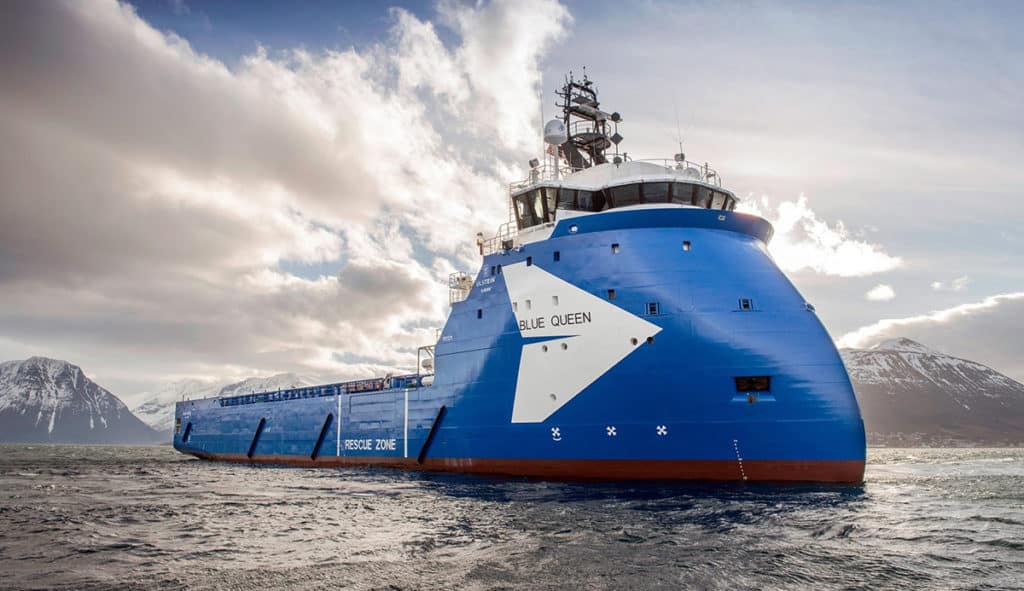
The American boating consumer bears a remarkable psychological profile when it comes to wants and needs.
A cursory glance at the lines of most boats proves that profiles haven’t changed dramatically over the past 60 or so years. Certainly, construction methods such as resin infusion and injection molding have altered business as usual, and ingredients have also changed to include all manner of space-age composites, epoxies, paints, computer mapping for engines that produces vastly greater horsepower from smaller blocks, and so on. Even propulsion has changed with the advent of pod drives and big outboards. But here’s the weird part: Any time a designer or builder introduces a model that looks significantly different, whether it is Euro-styled or functionally clunky, it fails. It doesn’t matter how well the boat performs, the typical boater rejects it because it doesn’t look like what he knows. We, as an enthusiast niche involving boats, are horribly set in our aesthetic ways.
Look at how well multihulls handle heavy seas. When it comes to seakeeping ability, efficiency and performance, the catamaran has a lot going for it, as anyone who happened to catch some of the most recent America’s Cup racing can attest. And yet, to date, production multihulls have enjoyed only moderate acceptance by boaters.
Here are six of the latest hull-design innovations and technologies being used elsewhere in the maritime world that we will likely never accept for our recreational boats — even though they all work well.
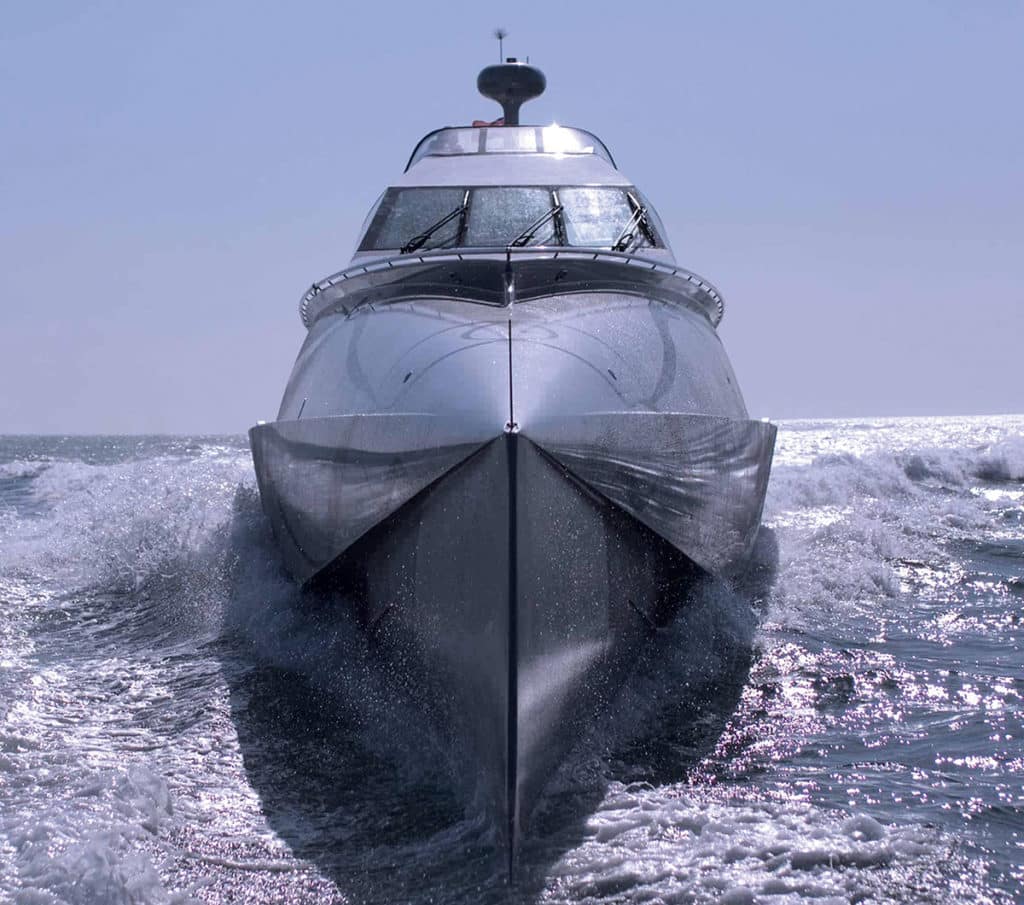
Wave-Piercing Hulls Most accounts cite wave-piercing technology as coming on the scene around the start of the 20th century. However, it has been employed as far back as the times of the Phoenicians and ancient Romans. The design concept consists of a bow with little buoyancy, a hull that slopes inward from the waterline and, ergo, a large reduction in wave-making resistance. While it works well in heavy seas, the drawbacks include reduced interior volume forward and a very wet ride because the waves come up and over the bow as a matter of course. Wave piercers fell out of favor for a period of time due to these same drawbacks but have recently enjoyed a resurgence of popularity because of their dramatic fuel-efficiency gains.
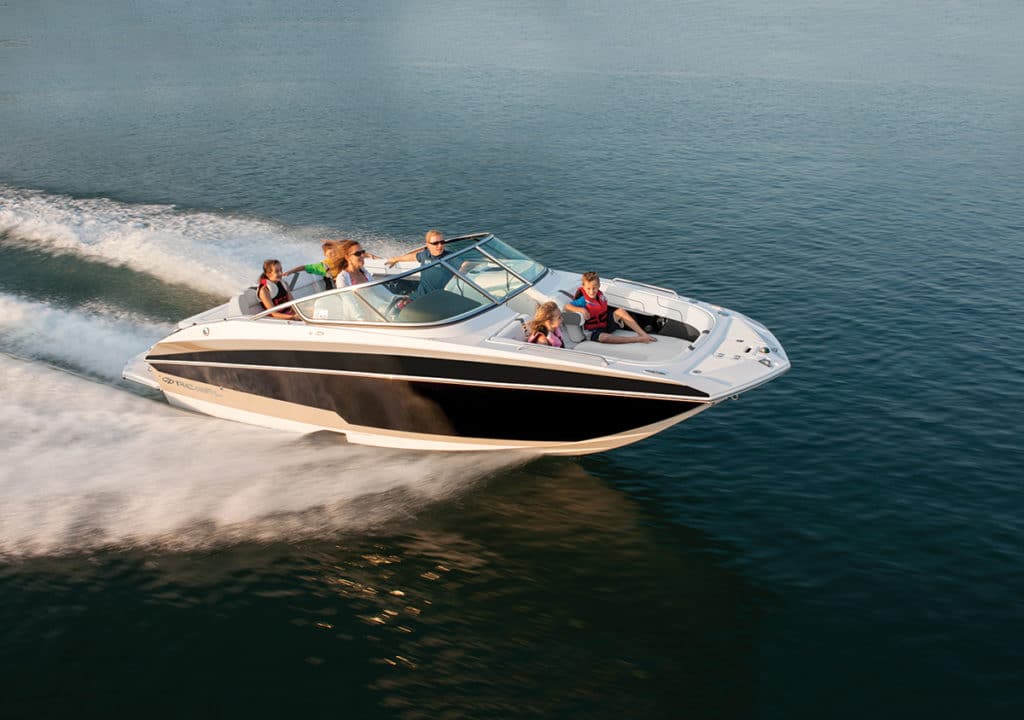
Stepped Hulls OK, this hull form has achieved a certain level of acceptance in our recreational boats, mostly in performance boats or offshore center consoles. But why isn’t it more popular? The stepped bottom has been around as a V-bottom refinement since at least 1912. Steps are grooves in the hull stretching outward from the keel to the chines. Most hulls sport one or two steps per side. And a vessel should really be capable of cruising in excess of about 30 knots for a stepped hull to be worthwhile. Steps work by allowing air to be “injected” against the running surface, breaking contact between part of the hull and the water, which in effect turns the running surface into numerous short, wide planes, rather than one long, narrow one.
How much the hull surface contacts the water directly determines the amount of drag a hull suffers. Steps (also called vents) decrease the amount of hull contacting the water (called the wetted surface), thereby decreasing drag, increasing speed for the same horsepower, and increasing fuel efficiency. It all sounds good. But steps also come with potential drawbacks. Though modern deep-V designs have enough deadrise to counteract the problem in most cases, stepped hulls have been known to suffer from transom slide in sharp turns at speed. They also require attention to loading and trim because the steps need the proper angle of attack to function correctly; they don’t offer an advantage in flat, calm water; and they require a special trailer.
Most owners of stepped-hull vessels are experienced and want to travel at high speeds in moderate to heavy seas, and/or achieve good economy and range. Yet to date, performance and center console builders aside, only Regal Boats, with its FasTrac hulls, and Formula have committed to using steps in production cruisers and sport boats.
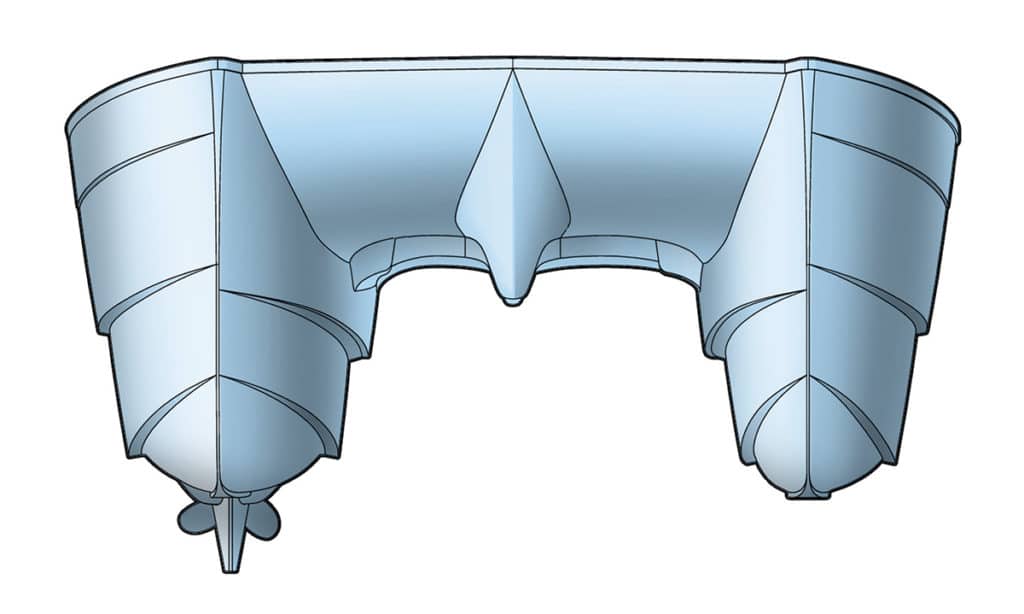
Asymmetrical Twin Hulls This unique design concept comes from the drawing board of Larry Graf, the pioneer who put power catamarans on the map here in the U.S. when he founded Glacier Bay Boats in 1987. His new company, Aspen Powerboats, employs a cat design where one hull is narrower (35 percent) than the other. His patent calls it a Power Proa, and it relies on a single engine in only the wider of the two hulls. The hull shapes, alignment and placement compensate for the offset propulsion thrust, allowing the vessel to run straight and true. With only one set of running gear in the water, inherent appendage drag is reduced by 20 percent. Combined with the efficiency of the hull designs, overall fuel efficiency of the Aspen rises to an impressive 70 percent over monohulls of comparable size. Aspen won an award for the best 30- to 39-foot catamaran in the world in 2014.
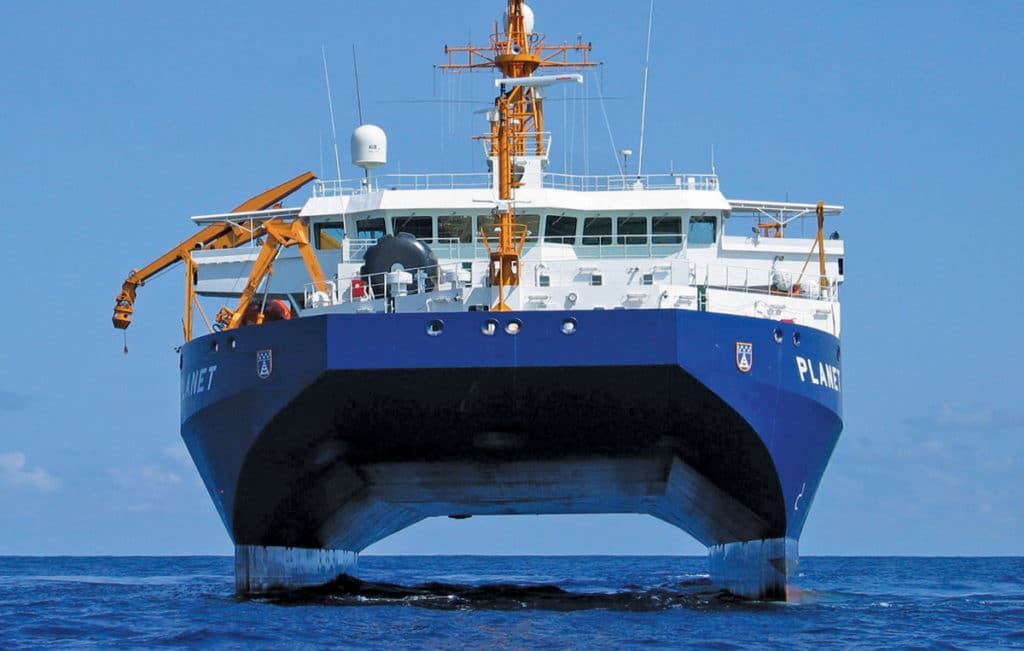
SWATH A quick glance might lead you to believe that a SWATH (small waterplane area twin hull) vessel is a catamaran. And it is but only to the extent that it has two hulls in the water with a bridge across the top. But that’s where the hulls’ similarities end.
Consider a submarine. Once under the surface, it runs stable, with no roll or pitching from wave action. All that wave energy remains on the sea surface. That basically explains how a SWATH design functions.
If you’ve ever dived under a wave at the beach to avoid being smacked by it, you know that the water beneath the wave is calmer. SWATH minimizes a vessel’s volume where the water meets the air (which is where all the wave energy is at its peak). The bulk of the vessel’s displacement and buoyancy runs beneath the waves, affording amazing stability, even in big seas and at high speeds. Please think of high speeds as a relative term here, as this is not a planing hull. What SWATH does provide, however, are a wide, stable deck and unsurpassed ride quality, especially in rough seas.
Drawbacks to SWATH designs include the fact that each hull must be custom designed. Draft runs deeper than standard hulls (especially planing hulls). The underwater “torpedoes” providing buoyancy must run parallel to the water’s surface, which requires a fairly complex trim-control system. And the underside of the deck must be far enough above the sea surface to avoid waves slamming up into it. Finally, SWATH vessels cost more to design and build than conventional hulls.
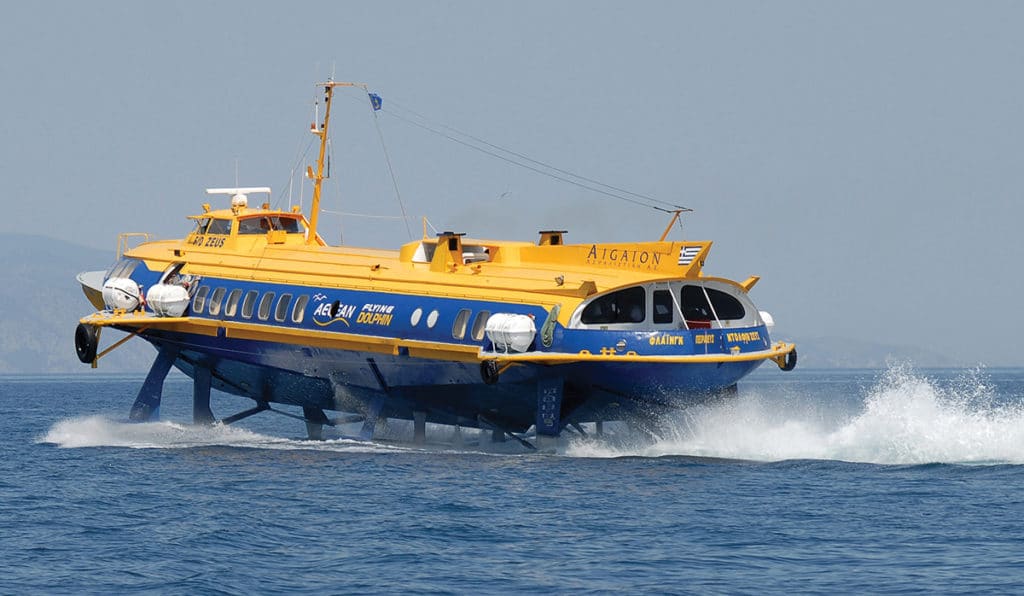
Hydrofoils Once the strict province of commercial ferries and a few high-speed military vessels, the most recent America’s Cup has spurred hydrofoil acceptance to new heights. Will it catch on with powerboats?
The hydrofoil design acts exactly like an airplane wing, providing more lift than the drag coefficient the vessel produces, thereby lifting the entire hull out of the water. Only the hydrofoils remain in the water, unaffected by surface wave action. In fact, hydrofoils cut inherent resistance to zero while the hull is out of the water. In the case of power-driven boats, you still suffer drag from the propulsion system (prop, shaft or the like).
The most significant disadvantage to this system on recreational boats is definitely the deployment of the foils. Unless you want the added draft of these struts sticking down below your hull all the time, you must be able to extend and withdraw them — a complex engineering feat. There is at least one recreational powerboat employing hydrofoils: Twin Vee builds a catamaran with foils that don’t actually lift the hulls completely out of the water. It does improve fuel economy and ride stability nonetheless. Still, boats ride more smoothly in a sea and go much faster with hydrofoils. With the dramatic acceptance of this technology in sailing, is it only a matter of time before recreational powerboats incorporate foils into their designs?
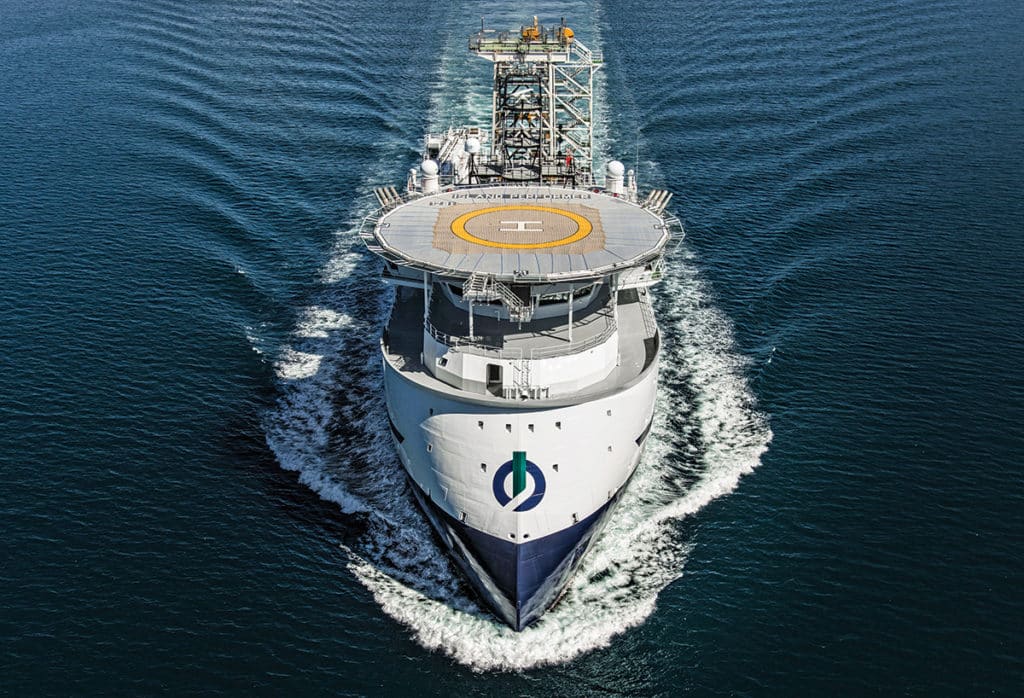
Ulstein X-Bow The Norwegian Ulstein Group has been designing offshore vessels since 1917. Presently, it has the notoriety of creating the most advanced bow design in history. The Ulstein X-Bow looks like it might be upside down, but it’s proven itself in more than 100 offshore support vessels to date. The X-Bow allows higher speeds and smoother rides in even the worst seas. Gone are the slamming and vibration that occur when the bow of a ship drops off a wave. It functions better on all points of sea, and its lower hydrodynamic drag substantially decreases fuel consumption. The X-Bow has proven so successful that Ulstein is in the process of creating an X-Stern design now.
You won’t ever see this on small recreational boats, but you can nod knowingly when someone points one out on a mega-yacht in the near future.
- More: Boats
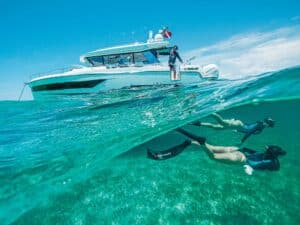
Six Boats Built for Adventure
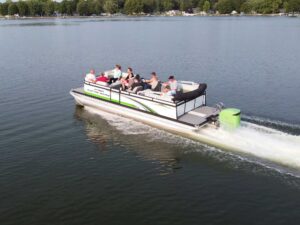
Hyper Electric Marine’s Electric-Outboard Pontoon Boat
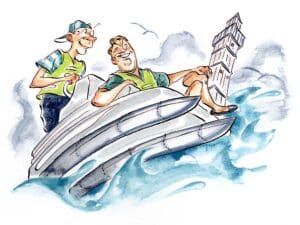
Modern Pontoons Are Built for a Variety of Boating Styles
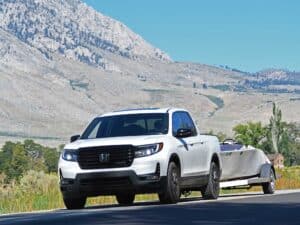
Can a Unibody Truck Easily Tow a Boat?
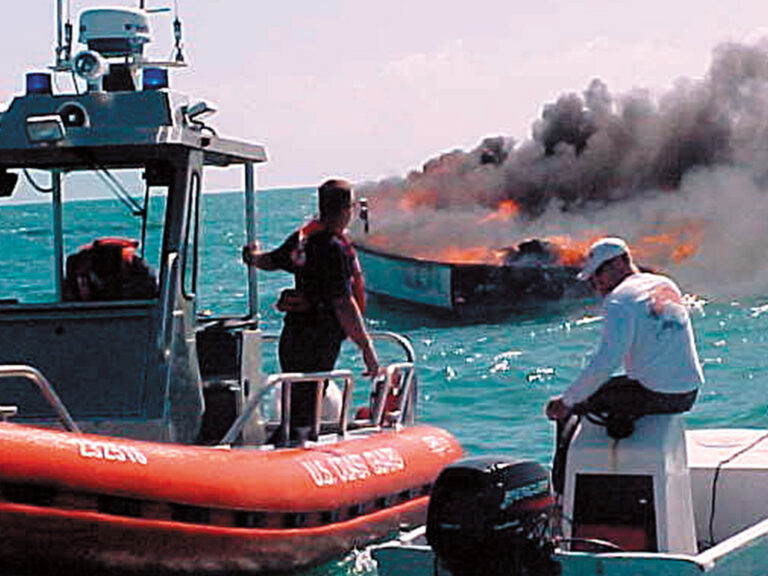
Should You Abandon Ship During a Boat Fire?
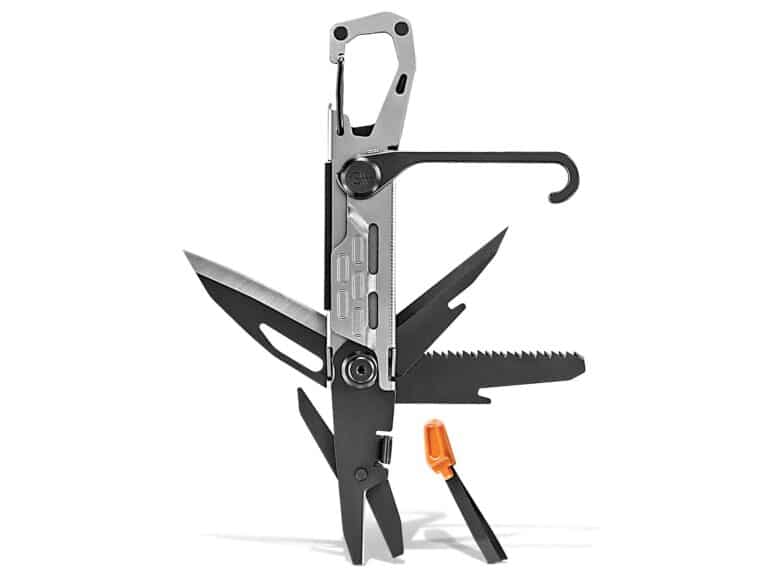
Top Gear for Boating Adventures
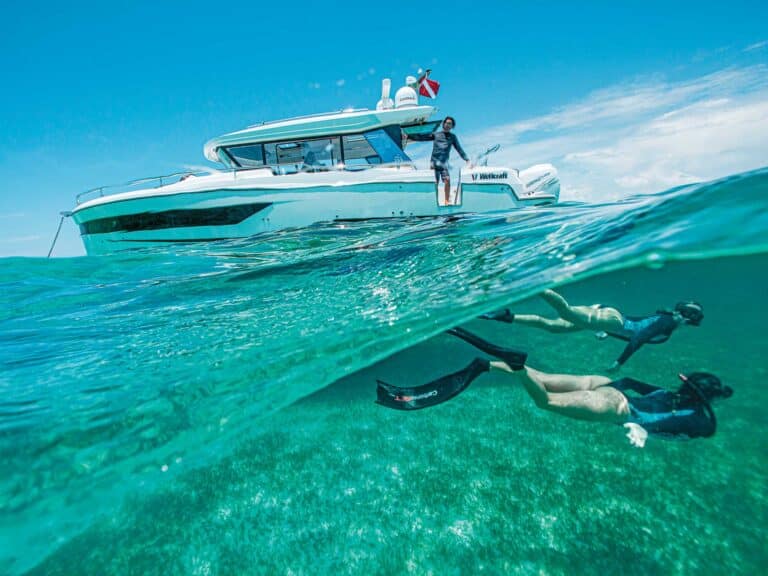
38 Top Make-Ready Tips for the Spring Boating Season

- Digital Edition
- Customer Service
- Privacy Policy
- Terms of Use
- Cruising World
- Florida Travel + Life
- Sailing World
- Salt Water Sportsman
- Sport Fishing
- Wakeboarding
Many products featured on this site were editorially chosen. Boating may receive financial compensation for products purchased through this site.
Copyright © 2024 Boating. A Bonnier LLC Company . All rights reserved. Reproduction in whole or in part without permission is prohibited.
- Popular Professionals
- Design & Planning
- Construction & Renovation
- Finishes & Fixtures
- Landscaping & Outdoor
- Systems & Appliances
- Interior Designers & Decorators
- Architects & Building Designers
- Design-Build Firms
- Kitchen & Bathroom Designers
- General Contractors
- Kitchen & Bathroom Remodelers
- Home Builders
- Roofing & Gutters
- Cabinets & Cabinetry
- Tile & Stone
- Hardwood Flooring Dealers
- Landscape Contractors
- Landscape Architects & Landscape Designers
- Home Stagers
- Swimming Pool Builders
- Lighting Designers and Suppliers
- 3D Rendering
- Sustainable Design
- Basement Design
- Architectural Design
- Universal Design
- Energy-Efficient Homes
- Multigenerational Homes
- House Plans
- Home Remodeling
- Home Additions
- Green Building
- Garage Building
- New Home Construction
- Basement Remodeling
- Stair & Railing Contractors
- Cabinetry & Cabinet Makers
- Roofing & Gutter Contractors
- Window Contractors
- Exterior & Siding Contractors
- Carpet Contractors
- Carpet Installation
- Flooring Contractors
- Wood Floor Refinishing
- Tile Installation
- Custom Countertops
- Quartz Countertops
- Cabinet Refinishing
- Custom Bathroom Vanities
- Finish Carpentry
- Cabinet Repair
- Custom Windows
- Window Treatment Services
- Window Repair
- Fireplace Contractors
- Paint & Wall Covering Dealers
- Door Contractors
- Glass & Shower Door Contractors
- Landscape Construction
- Land Clearing
- Garden & Landscape Supplies
- Deck & Patio Builders
- Deck Repair
- Patio Design
- Stone, Pavers, & Concrete
- Paver Installation
- Driveway & Paving Contractors
- Driveway Repair
- Asphalt Paving
- Garage Door Repair
- Fence Contractors
- Fence Installation
- Gate Repair
- Pergola Construction
- Spa & Pool Maintenance
- Swimming Pool Contractors
- Hot Tub Installation
- HVAC Contractors
- Electricians
- Appliance Services
- Solar Energy Contractors
- Outdoor Lighting Installation
- Landscape Lighting Installation
- Outdoor Lighting & Audio/Visual Specialists
- Home Theater & Home Automation Services
- Handyman Services
- Closet Designers
- Professional Organizers
- Furniture & Accessories Retailers
- Furniture Repair & Upholstery Services
- Specialty Contractors
- Color Consulting
- Wine Cellar Designers & Builders
- Home Inspection
- Custom Artists
- Columbus, OH Painters
- New York City, NY Landscapers
- San Diego, CA Bathroom Remodelers
- Minneapolis, MN Architects
- Portland, OR Tile Installers
- Kansas City, MO Flooring Contractors
- Denver, CO Countertop Installers
- San Francisco, CA New Home Builders
- Rugs & Decor
- Home Improvement
- Kitchen & Tabletop
- Bathroom Vanities
- Bathroom Vanity Lighting
- Bathroom Mirrors
- Bathroom Fixtures
- Nightstands & Bedside Tables
- Kitchen & Dining
- Bar Stools & Counter Stools
- Dining Chairs
- Dining Tables
- Buffets and Sideboards
- Kitchen Fixtures
- Wall Mirrors
- Living Room
- Armchairs & Accent Chairs
- Coffee & Accent Tables
- Sofas & Sectionals
- Media Storage
- Patio & Outdoor Furniture
- Outdoor Lighting
- Ceiling Lighting
- Chandeliers
- Pendant Lighting
- Wall Sconces
- Desks & Hutches
- Office Chairs
- View All Products
- Side & End Tables
- Console Tables
- Living Room Sets
- Chaise Lounges
- Ottomans & Poufs
- Bedroom Furniture
- Nightstands
- Bedroom Sets
- Dining Room Sets
- Sideboards & Buffets
- File Cabinets
- Room Dividers
- Furniture Sale
- Trending in Furniture
- View All Furniture
- Bath Vanities
- Single Vanities
- Double Vanities
- Small Vanities
- Transitional Vanities
- Modern Vanities
- Houzz Curated Vanities
- Best Selling Vanities
- Bathroom Vanity Mirrors
- Medicine Cabinets
- Bathroom Faucets
- Bathroom Sinks
- Shower Doors
- Showerheads & Body Sprays
- Bathroom Accessories
- Bathroom Storage
- Trending in Bath
- View All Bath
- How to Choose a Bathroom Vanity

- Patio Furniture
- Outdoor Dining Furniture
- Outdoor Lounge Furniture
- Outdoor Chairs
- Adirondack Chairs
- Outdoor Bar Furniture
- Outdoor Benches
- Wall Lights & Sconces
- Outdoor Flush-Mounts
- Landscape Lighting
- Outdoor Flood & Spot Lights
- Outdoor Decor
- Outdoor Rugs
- Outdoor Cushions & Pillows
- Patio Umbrellas
- Lawn & Garden
- Garden Statues & Yard Art
- Planters & Pots
- Outdoor Sale
- Trending in Outdoor
- View All Outdoor
- 8 x 10 Rugs
- 9 x 12 Rugs
- Hall & Stair Runners
- Home Decor & Accents
- Pillows & Throws
- Decorative Storage
- Faux Florals
- Wall Panels
- Window Treatments
- Curtain Rods
- Blackout Curtains
- Blinds & Shades
- Rugs & Decor Sale
- Trending in Rugs & Decor
- View All Rugs & Decor
- Pendant Lights
- Flush-Mounts
- Ceiling Fans
- Track Lighting
- Wall Lighting
- Swing Arm Wall Lights
- Display Lighting
- Table Lamps
- Floor Lamps
- Lamp Shades
- Lighting Sale
- Trending in Lighting
- View All Lighting
- Bathroom Remodel
- Kitchen Remodel
- Kitchen Faucets
- Kitchen Sinks
- Major Kitchen Appliances
- Cabinet Hardware
- Backsplash Tile
- Mosaic Tile
- Wall & Floor Tile
- Accent, Trim & Border Tile
- Whole House Remodel
- Heating & Cooling
- Building Materials
- Front Doors
- Interior Doors
- Home Improvement Sale
- Trending in Home Improvement
- View All Home Improvement
- Cups & Glassware
- Kitchen & Table Linens
- Kitchen Storage and Org
- Kitchen Islands & Carts
- Food Containers & Canisters
- Pantry & Cabinet Organizers
- Kitchen Appliances
- Gas & Electric Ranges
- Range Hoods & Vents
- Beer & Wine Refrigerators
- Small Kitchen Appliances
- Cookware & Bakeware
- Tools & Gadgets
- Kitchen & Tabletop Sale
- Trending in Kitchen & Tabletop
- View All Kitchen & Tabletop
- Storage & Organization
- Baby & Kids
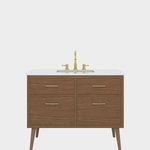
- View all photos
- Dining Room
- Breakfast Nook
- Family Room
- Bed & Bath
- Powder Room
- Storage & Closet
- Outdoor Kitchen
- Bar & Wine
- Wine Cellar
- Home Office
- Popular Design Ideas
- Kitchen Backsplash
- Deck Railing
- Privacy Fence
- Small Closet
- Stories and Guides
- Popular Stories
- Renovation Cost Guides
- Fence Installation Cost Guide
- Window Installation Cost Guide
- Discussions
- Design Dilemmas
- Before & After
- Houzz Research
- View all pros
- View all services
- View all products
- View all sales
- Living Room Chairs
- Dining Room Furniture
- Coffee Tables
- Home Office Furniture
- Join as a Pro
- Interior Design Software
- Project Management
- Custom Website
- Lead Generation
- Invoicing & Billing
- Landscape Contractor Software
- General Contractor Software
- Remodeler Software
- Builder Software
- Roofer Software
- Architect Software
- Takeoff Software
- Lumber & Framing Takeoffs
- Steel Takeoffs
- Concrete Takeoffs
- Drywall Takeoffs
- Insulation Takeoffs
- Stories & Guides
- LATEST FROM HOUZZ
- HOUZZ DISCUSSIONS
- SHOP KITCHEN & DINING
- Kitchen & Dining Furniture
- Sinks & Faucets
- Kitchen Cabinets & Storage
- Knobs & Pulls
- Kitchen Knives
- KITCHEN PHOTOS
- FIND KITCHEN PROS
- Bath Accessories
- Bath Linens
- BATH PHOTOS
- FIND BATH PROS
- SHOP BEDROOM
- Beds & Headboards
- Bedroom Decor
- Closet Storage
- Bedroom Vanities
- BEDROOM PHOTOS
- Kids' Room
- FIND DESIGN PROS
- SHOP LIVING
- Fireplaces & Accessories
- LIVING PHOTOS
- SHOP OUTDOOR
- Pool & Spa
- Backyard Play
- OUTDOOR PHOTOS
- FIND LANDSCAPING PROS
- SHOP LIGHTING
- Bathroom & Vanity
- Flush Mounts
- Kitchen & Cabinet
- Outdoor Wall Lights
- Outdoor Hanging Lights
- Kids' Lighting
- Decorative Accents
- Artificial Flowers & Plants
- Decorative Objects
- Screens & Room Dividers
- Wall Shelves
- About Houzz
- Houzz Credit Cards
- Privacy & Notice
- Cookie Policy
- Your Privacy Choices
- Mobile Apps
- Copyright & Trademark
- For Professionals
- Houzz vs. Houzz Pro
- Houzz Pro vs. Ivy
- Houzz Pro Advertising Reviews
- Houzz Pro 3D Floor Planner Reviews
- Trade Program
- Buttons & Badges
- Your Orders
- Shipping & Delivery
- Return Policy
- Houzz Canada
- Review Professionals
- Suggested Professionals
- Accessibility
- Houzz Support
- COUNTRY COUNTRY
Design-Build Contractors & Firms in Elektrostal'
Location (1).
- Use My Current Location
Popular Locations
- Albuquerque
- Cedar Rapids
- Grand Rapids
- Indianapolis
- Jacksonville
- Kansas City
- Little Rock
- Los Angeles
- Minneapolis
- New Orleans
- Oklahoma City
- Orange County
- Philadelphia
- Portland Maine
- Salt Lake City
- San Francisco
- San Luis Obispo
- Santa Barbara
- Washington D.C.
- Elektrostal', Moscow Oblast, Russia
Featured Reviews for Design-Build Contractors & Firms in Elektrostal'
- Reach out to the pro(s) you want, then share your vision to get the ball rolling.
- Request and compare quotes, then choose the Design-Build firm, that perfectly fits your project and budget limits.
- Building Design
- Custom Homes
- Floor Plans
What is a design-build firm?
Questions to ask a prospective elektrostal' design-builder:, business services, connect with us.

- Aviazapchast PLC Representative Offices
- Licenses and Certifications
- Quality Management
- International partners
- Partner companies

IMAGES
VIDEO
COMMENTS
CFD For Powerboat Design, Part 1. Scan data are rendered into digital design files suitable for performing computational fluid dynamics (CFD) modeling like this one to test the hydrodynamic performance of the vessel. In its earliest days, composite boatbuilding was open to most anyone who could cut fiberglass fabric and spread resin.
Power Boats. A selection of plans for building your own power boat. Inboard and outboard designs are detailed. Horse power ratings, achievable speeds and water ski information are all included in the description of each plan. Blue Marlin 30. $ 185.00 - $ 200.00 (USD)
A truly flat-bottomed boat has zero degrees of deadrise. Most powerboat hulls have some deadrise, giving the hull bottom its "V" shape when viewed from the bow or stern. The deep-V hull was developed in the late 1950s and proved to be optimal for high-speed offshore vessels, with transom deadrise of 18 to 24 degrees.
CFD for Powerboat Design, Part 2. By Clay Ratcliffe, Jul 20, 2021. Computational fluid dynamics (CFD) modeling of the aerodynamics of a Doug Wright Designs 32′ (9.75m) high-speed catamaran revealed that while it ran at 100 mph, air compressed between the hulls, deck, and water was creating a backflow high in the tunnel and leaking out the ...
A shape that generates lift also produces resistance, and a wider hull that has more interior room also has more hull surface in contact with the water, and therefore experiences more resistance. However, hull design isn't just about speed and interior volume. There's also stability and tenderness, which is a boat's tendency to rock.
VBDP Version 8.10 -Design, analyze, optimize the performance of your Vee hull or Vee-pad hull; with ALL the features of TBDP. Optimize your vee hull and Vee-pad performance the easy way! Technical, design and performance articles on many subjects for TUNNEL boats, Powercats, VEE hulls and vee-pad hulls. All the articles, papers are FREE.
Set to become the bible for powerboat owners and operators for years to come, this long overdue analysis and review of modern powerboat design and operation explores how powerboats have developed, why, and how design impacts on control and performance. Every aspect of the powerboat's design is considered individually and as part of the whole.
Set to become the bible for powerboat owners and operators for years to come, this long overdue analysis and review of modern powerboat design and operation explores how powerboats have developed, why, and how design impacts on control and performance.Every aspect of the powerboat's design is considered individually and as part of the whole.
Plans for sail, power, & rowboats - 8' to 62'. Especially for do-it-yourself builders. Build in wood, ply, stitch-&-glue, aluminum, steel, & fiberglass. [ view ] The official site of HH Payson, author of the Instant Boats series on inexpensive easily constructed boats for oar power and sail (the famous Phil Bolger designs.)
Previously available as options in larger boats such as the Viking 66 and Hatteras 70 GT, with lower cost stabilizers such as the Seakeeper 5, we're now starting to see availability for 30' to 50' sized boats. (The Seakeeper comes standard on the MJM 50z .) Auto leveling systems from Lenco Marine AutoGlide and Humphree also help avoid the ...
These hulls do perform well at high speeds in rough water which is one reason that they are so successful as racing powerboats. Deep V planing hulls, depending on the particular design, can be driven at speeds in excess of 50 knots, however most are designed to cruise at speeds between 30 to 35 knots.
But as reported in Power & Motoryacht' s July 2018 issue, the builder's new 90-footer sports a foil—a 14-foot wing slung beneath the hull, to add lift and increase top speed to a barely believable 50 knots. Tests of a fixed protoype foil made of aluminum and carbon were apparently successful; now the plan is to design a retractable version.
powerboat design - yacht design - marine design (how to design a boat)
These powerboats provide you an excellent combination of performance, stability, and maneuverability. These boats have a catamaran design, relying on two hulls to float the vessel instead of the typical deep-V hull found on other powerboat models. The multi-hull powerboat is ideal for cruising, and you can set it up for fishing or watersports ...
Boat design and boatbuilding projects, plans, concepts, reviews, and resources. Sailboat, multihull, powerboat, and yacht manufacturers and custom builders. Directory of yacht designers and naval architects, gallery of design work, and active boat design and boat building discussion forums.
The Evolution of Powerboat Design. Powerboat design continued to evolve throughout the 20th century. New materials, such as aluminum and fiberglass, were used to make boats lighter, faster, and more fuel-efficient. Innovations in hull design, such as deep vee hulls and stepped hulls, greatly improved the boats' handling and stability.
Boat design and boatbuilding projects, plans, concepts, reviews, and resources. Sailboat, multihull, powerboat, and yacht manufacturers and custom builders. Directory of yacht designers and naval architects, gallery of design work, and active boat design and boat building discussion forums.
His new company, Aspen Powerboats, employs a cat design where one hull is narrower (35 percent) than the other. His patent calls it a Power Proa, and it relies on a single engine in only the wider of the two hulls. The hull shapes, alignment and placement compensate for the offset propulsion thrust, allowing the vessel to run straight and true. ...
But his most successful design was built in New Jersey. The Egg Harbor 37 is one of the prettiest powerboats ever created, in my opinion (especially the sportfish version with its larger cockpit). Stadel was known for drawing very shapely hulls, including fisherman-style schooners and the charming Pilot 26 sloop.
Get directions to Yuzhny prospekt, 6к1 and view details like the building's postal code, description, photos, and reviews on each business in the building
Search 1,121 Elektrostal' new & custom home builders to find the best custom home builder for your project. See the top reviewed local custom home builders in Elektrostal', Moscow Oblast, Russia on Houzz.
Find design-build contractors near me on Houzz Before you hire a design-build contractor in Elektrostal', Moscow Oblast, browse through our network of over 810 local design-build contractors. Read through customer reviews, check out their past projects and then request a quote from the best design-build contractors near you.
3. 360 Aircraft Repair Plant, Joint-Stock Company (360 ARP JSC) Ryazan. 4. 419 Aircraft Repair Plant, Joint-Stock Company (419 ARP JSC) Saint-Petersburg. 5. 99 Aviation Technological Equipment Plant, Joint-Stock Company (99 ZATO JSC) Moscow.